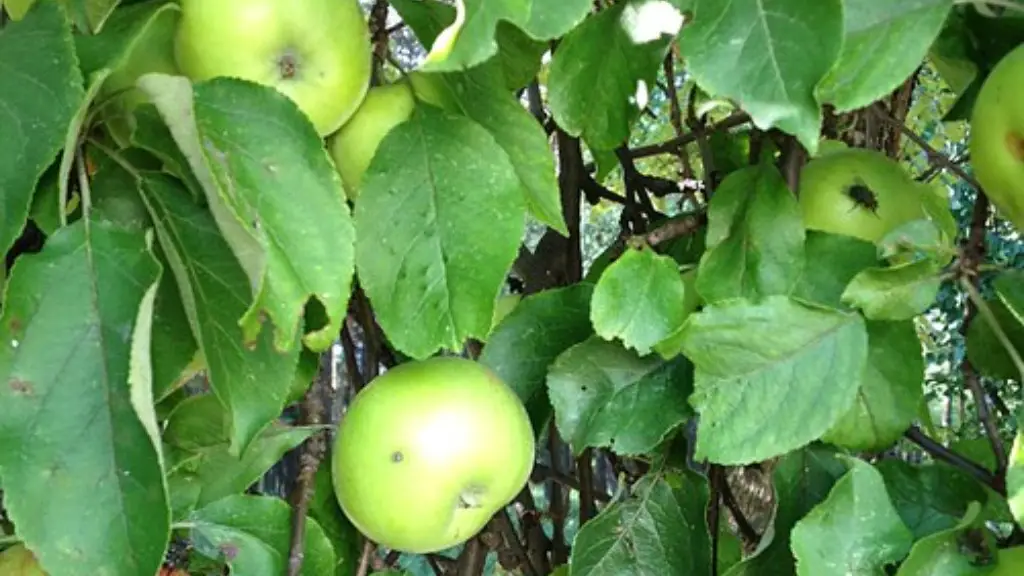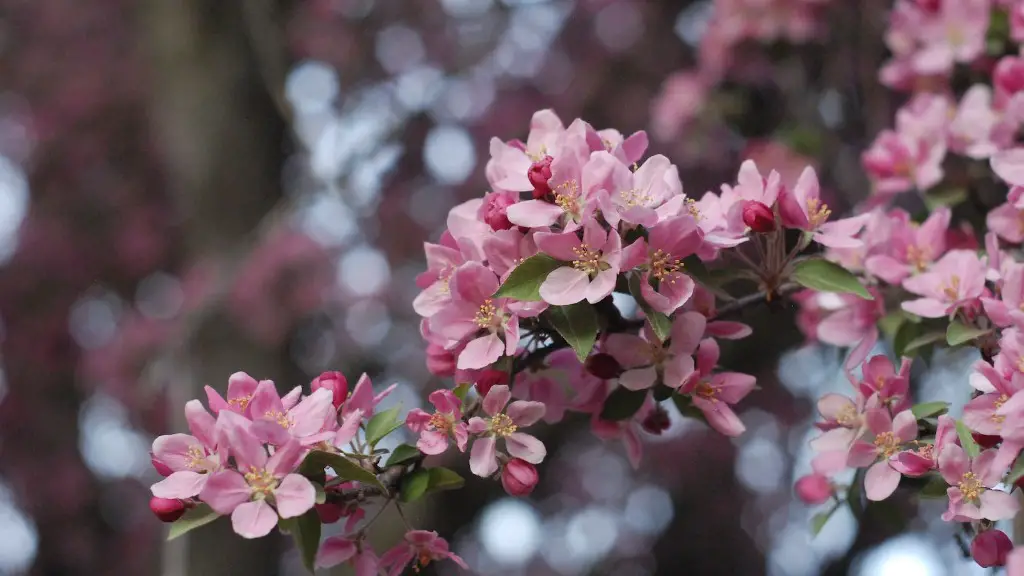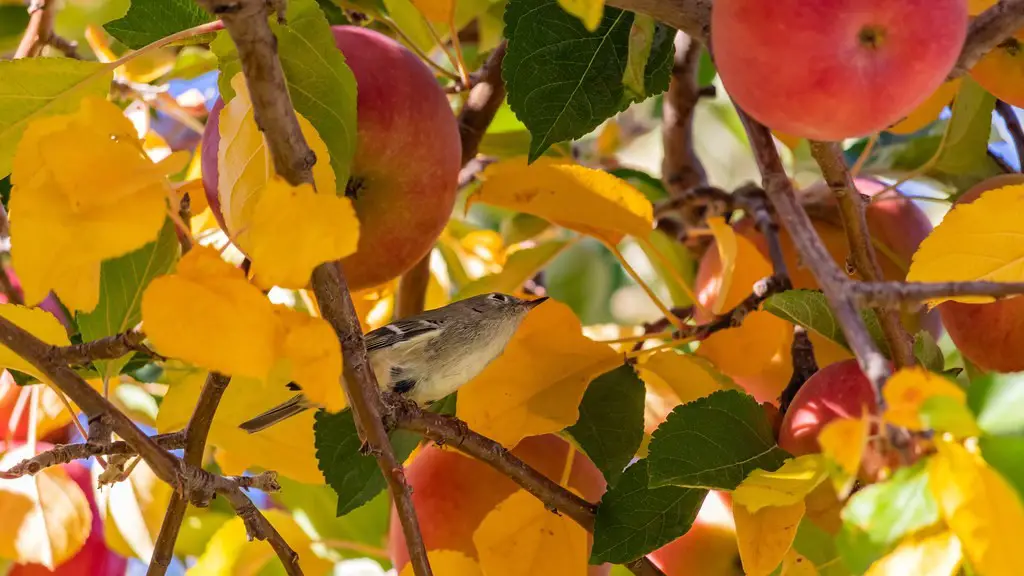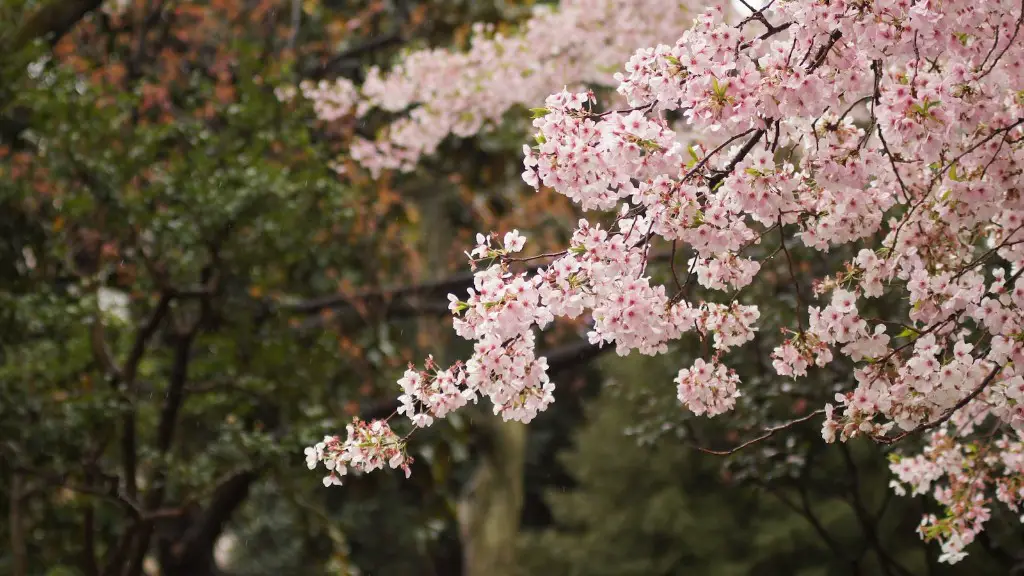Aphids are annoying little insects that can easily ruin your apple tree if left unchecked. Fortunately, there are simple ways to control aphids on your apple tree without resorting to insecticides. Here are some tips on how to get rid of aphids on your apple tree.
First, check the base of the tree and the surrounding vegetation for occasional infestations. If you see any aphids, you can use a hand-held vacuum cleaner or a garden hose to blast them off. This process should be done regularly, as aphids breed quickly and can easily overrun the tree if left unchecked.
Second, another effective way of controlling aphids is to use a contact pesticide, such as insecticidal soaps or neem oil. These products should be applied directly onto the aphids to destroy them. Be sure to read and follow the instructions given on the product, as the wrong application might lead to more damage than good.
Third, you can also use a homemade solution of garlic, onion and dish soap to get rid of aphids. Simply blend the components in a blender, add some water to dilute, and spray it over your apple tree. This homemade solution should be used as a preventive measure, as it does not necessarily remove existing aphids, but should reduce further infestations.
Fourth, manual removal is also possible. When there’s an infestation, you can manually pick the aphids from the twigs and leaves of the tree. Be sure to also check under the leaves and beneath the bark and around the base of the tree.
Fifth, you can also introduce beneficial insects, such as lady beetles, lacewings, and hoverflies, into your garden to keep aphids in control. Nature has a perfect balance and introducing these beneficial insects into your garden will ensure that aphids don’t take over your apple tree.
Finally, you can also use sticky traps to detect aphids. Place them around the tree and inspect them every few days. This way, you can catch the aphids before they can do much damage.
Natural Predators
One way to get rid of aphids on your apple tree is to introduce natural predators into your garden. For example, lady beetles, lacewings and hoverflies are common predators of aphids and can help keep their numbers in check. Check with your local nursery to find out the most suitable species for your area, and then introduce them into your garden at the right time.
Another way to encourage the presence of aphid predators is to keep your garden well-maintained, with a variety of flowering plants that provide nectar and pollen to the predators. This way, they will have food sources available, and they can also lay eggs and get better established in your garden.
You can also use tailored pest control strategies to attract predators, such as yellow sticky traps or self-made lure traps. These traps can be placed around the tree and emptied regularly of captured aphids, thus reducing their population.
Finally, make sure you don’t use insecticides, as this will kill the aphid’s predators as well as the pests. It’s best to use natural predators to control the aphids’ population without causing further damage to the environment.
Homemade Solutions
For those who don’t want to use commercial insecticides, there are also a few homemade solutions to get rid of aphids on an apple tree. These solutions are usually made of common ingredients and can be a quick fix to reduce aphid populations.
One of the most popular recipes is a blend of garlic, onion and dish soap. All you need to do is blend the components in a blender, add some water to dilute, then spray on the tree. This will give the tree a pungent smell that deters aphids and disrupts their life cycle. Just make sure to spray it across all parts of the tree and not just the leaves, as aphids can hide in the bark, too.
Another homemade solution is to mix two tablespoons of baking soda with one quart of water, then spray it onto the apple tree. Baking soda serves to both disrupt the aphids’ life cycle and repel them from the tree. It’s a very simple and cheap solution to keep your tree safe.
Finally, you can also sprinkle ground cloves around the tree and on the twigs and leaves, as these pests detest the smell of cloves. This is best done as a preventive measure, as it won’t really reduce the aphids’ population if they are already established on the tree.
Insecticidal Soaps and Neem Oil
Insecticidal soaps and neem oil are two of the most popular commercial products to get rid of aphids on an apple tree. These are contact pesticides – they have to be applied directly to the aphids in order to kill them. Make sure to follow the instructions on the package, as applying too much or too little might damage the tree.
Insecticidal soaps are made of fatty acids, which attack the protective outer layer of the aphids’ body and dissolve it, causing death by dehydration. Apply it to the affected parts of the tree, paying special attention to the underside of the leaves, as aphids tend to hang out there. Reapply after rain or if temperatures are above 80°F.
Neem oil, on the other hand, contains two active ingredients: azadirachtin and salannin. These compounds act as insect growth regulators and disrupt the aphids’ life cycle, preventing them from reproducing and killing them over time. Neem oil is effective in both outdoor and indoor plants, so it’s a great choice for small orchards.
If you’ve already noticed an aphid infestation, it’s important to act quickly and treat the plant with an insecticidal soap or neem oil. Make sure to keep an eye on the plant afterwards, as re-treating may be necessary if another infestation pops up.
Essential Oils and Insecticides
Among the more natural solutions to get rid of aphids on an apple tree, essential oils can be quite effective. Oils like peppermint and clove have an unpleasant odor that repels most insects, including aphids. All you need to do is to get a few drops of these oils, dilute them in a quart of water and apply them directly to the tree with a spray bottle.
Another way to tackle aphids is by using conventional insecticides. This is usually not recommended unless the infestation is severe and cannot be controlled with homemade or natural products. When using insecticides, be sure to check if they are safe to use on food-bearing plants, and use them only if necessary.
Insecticides are available in a variety of formulations: liquid concentrates, ready-to-use, wettable and dust formulations. Each of them should be used as per the directions provided on the package. If you opt for a liquid concentrate, remember to mix it with water and apply it to the infested parts of the tree.
Finally, always make sure to read and follow the labels carefully, as misapplication of insecticides can result in damage to plants and the environment. It’s best to use insecticides as a last resort, and consider using natural or homemade solutions first.





